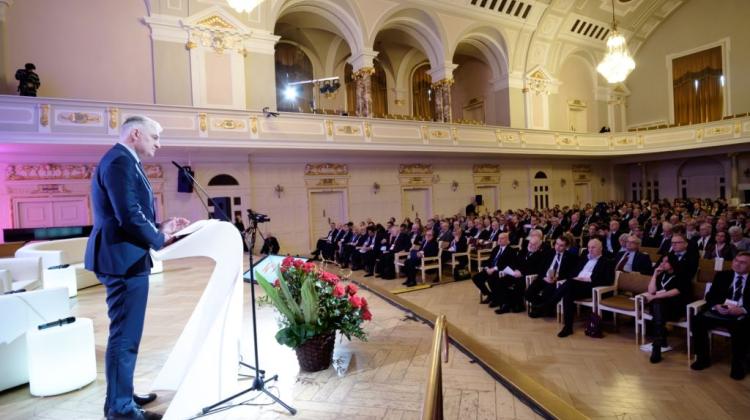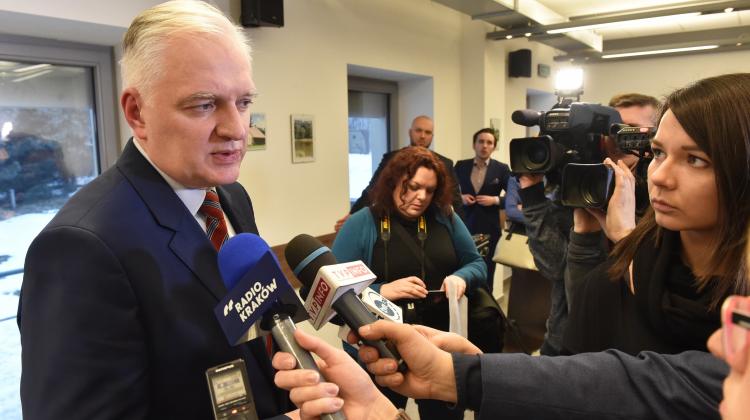Commissioning of the European XFEL laser started in Hamburg

Commissioning of the European XFEL (X-ray free electron laser) has begun in Hamburg. Polish researchers participated in the construction project of this latest large European research facility. "They were the first of the eight shareholders to fulfil their obligations" - informed the Ministry of Science and Higher Education.
European XFEL (X-ray free-electron laser) is an international project, the purpose of which is commissioning and operation of a powerful X-ray laser near Hamburg. It is one of the largest research investments in the world, which involves 11 European countries, including Poland. The contribution of our country to the XFEL budget is nearly 29 million euros. The whole project is worth 1.2 billion euros. The main shareholder of the European XFEL is DESY (Deutsches Eletronen Synchroton) - representative of Germany.
The commissioning process of the laser inaugurated at DESY in Hamburg last Thursday. In the underground tunnels with a total length of 5.8 kilometres specialist equipment is already installed - the "accelerator" part, enabling acceleration of electrons, and the "optical" part - enabling the formation of coherent X-ray beams, as well as stations for conducting scientific experiments. Commissioning such a giant is a time-consuming process, and the first beam is planned to be achieved in less than a year.
As one of the eight shareholders of the European XFEL, from the beginning Poland took part in the construction of the various parts of the device and the infrastructure necessary for the launch. The work of three research groups from Kraków, Wrocław and Warsaw was coordinated by the National Centre for Nuclear Research (Narodowe Centrum Badań Jądrowych, NCBJ).
"I would like to thank our research groups for their huge work they have contributed to the construction and commissioning of such an advanced research infrastructure that is the European XFEL" - said on Thursday Deputy Minister of Science Dr. Piotr Dardziński, who attended the ceremony at DESY. "New and unique competence acquired in this way determine the growing competitive advantage of Polish research units and individual companies. This is an excellent example of the economic development of our country through tackling the greatest scientific challenges of the twenty-first century" - said Deputy Minister Dardziński.
European XFEL outmatches conventional lasers in terms of brightness and short pulse duration, as well as the possibility of tuning over a wide wavelength range. European XFEL will generate, 27,000 times per second, ultra-short pulses of laser light with intensity billions of times greater than the intensity of the beams emitted by the best conventional X-ray sources. This will allow scientists to image the detailed structures of viruses, which will help in the development of future drugs; penetrate into the molecular cell function mechanisms; capture three-dimensional images of nanoworld objects; film chemical reactions (such as the process of forming or breaking of chemical bonds); and explore the processes occurring in the interior of planets and stars. The device will also allow to modify existing materials and develop entirely new ones.
The first tasks carried out by Wroclaw University of Technology, Wroclaw Technology Park and the company Cryosystems SA were completed already in 2012, resulting in the commissioning of a cryogenic line with two cryostats necessary to test the key components of the accelerator. Subsequent work performed by the Institute of Nuclear Physics PAS in Kraków included testing 816 1.3 GHz superconducting resonators and cryogenic modules for the XFEL electron accelerator and testing of superconducting magnets focusing and controlling the beam with sets of current wires. NCBJ designed, produced, tested and delivered to DESY, among other things, more than 1.6 thousand higher mod couplers of high-frequency field for superconducting resonators of the XFEL electron accelerator. In addition, as part of the last of the ongoing contracts, spring 2017 NCBJ will deliver 200 modules in 100 cassettes for control systems in the area of optical lines and research stations of the European XFEL.
But this is not the end of the work. "Pursuant to the agreement signed in July between Poland and Germany, we continue cooperation on this globally unique project" - says the director of NCBJ Prof. Krzysztof Kurek. Soon, our scientists will work at the device and search for new inventions in international groups. Poland, thanks to the involvement in the construction of the laser and its operation, will be a co-owner of all solutions developed there.
PAP - Science and Scholarship in Poland
ekr/ zan/ mrt/
tr. RL
Przed dodaniem komentarza prosimy o zapoznanie z Regulaminem forum serwisu Nauka w Polsce.

















